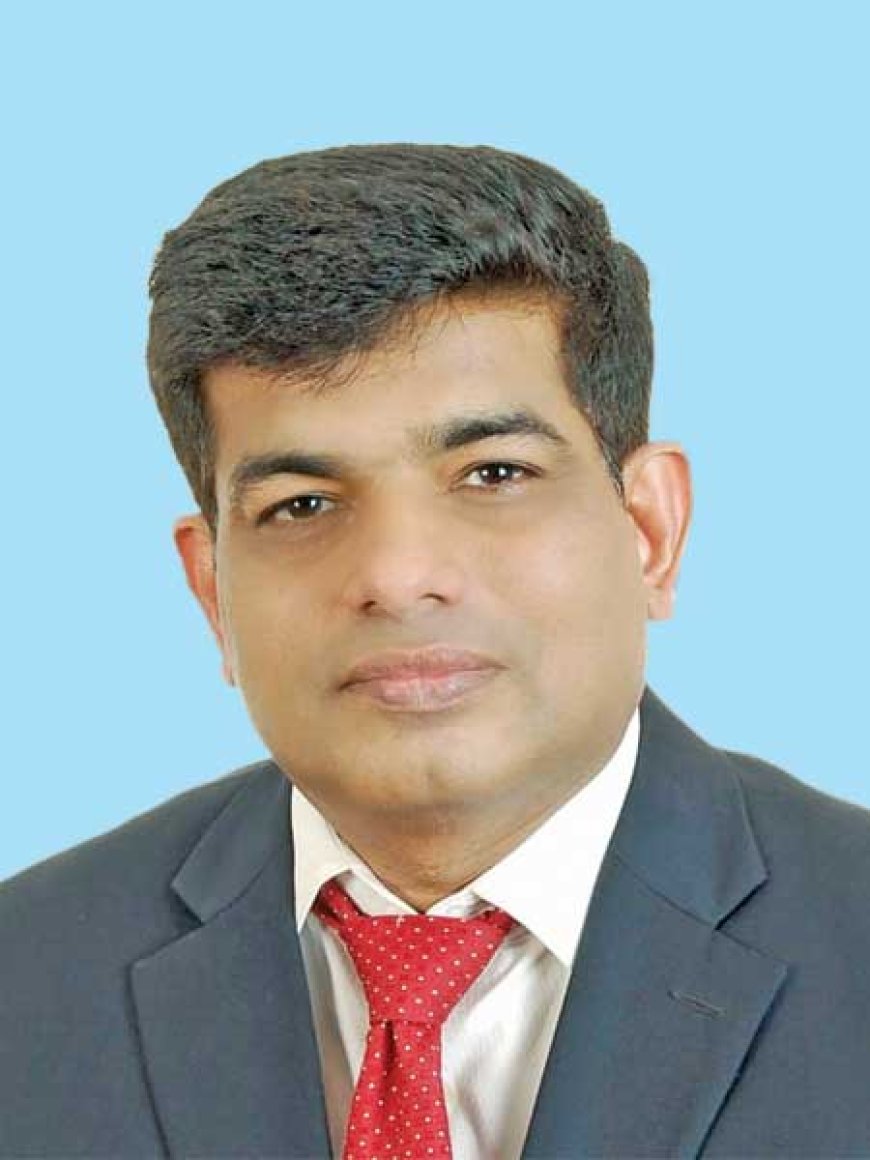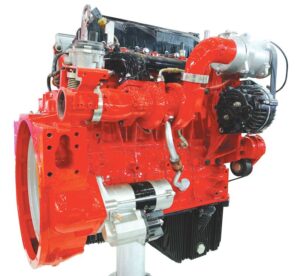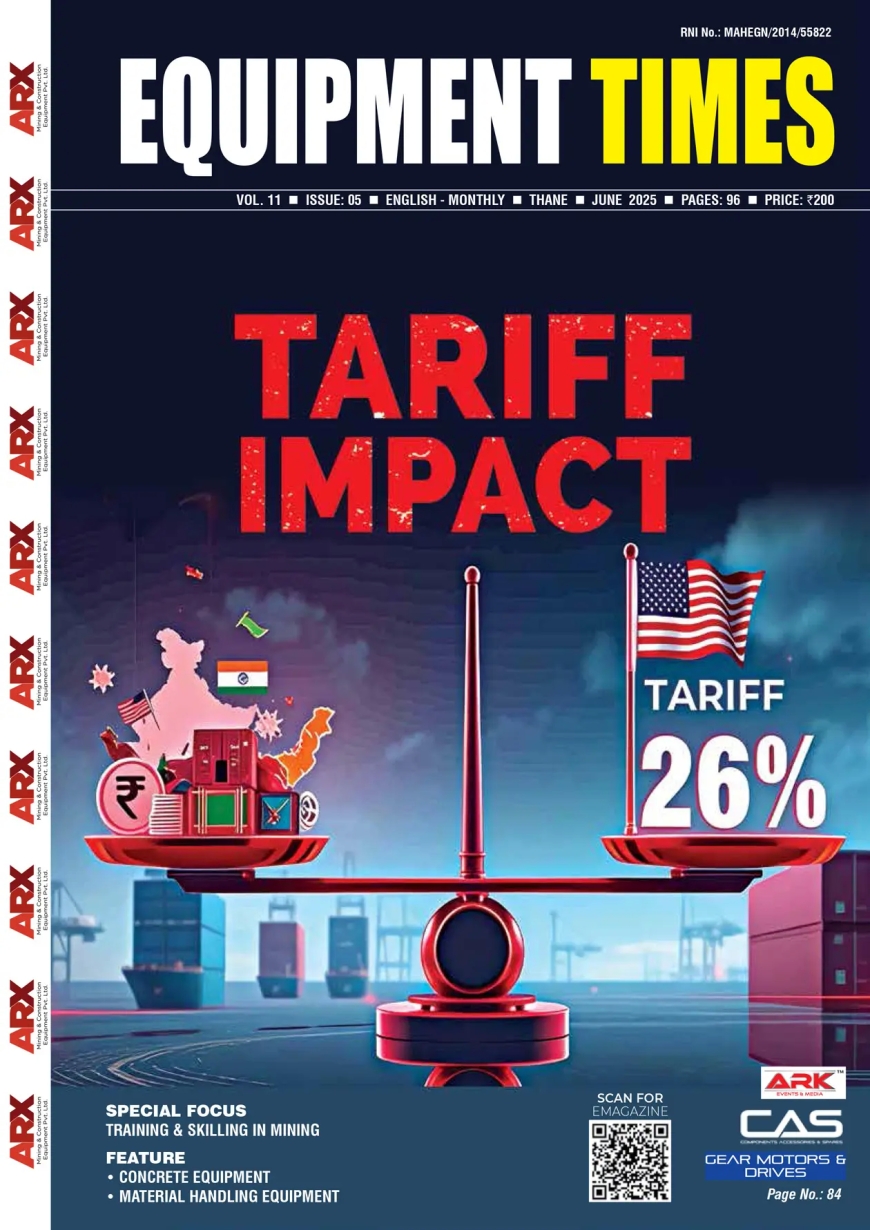Cummins India Ltd. completed 60 years in 2022, and continues to contribute to the global operations of Cummins Inc.
Nitin Jirafe, Engine Business Leader, Cummins Group in India What types of engines do you manufacture specifically for construction equipment? Cummins is a global power solutions provider, with a wide range of product portfolio and technology. This includes Internal combustion

Nitin Jirafe, Engine Business Leader, Cummins Group in India
What types of engines do you manufacture specifically for construction equipment?
Cummins is a global power solutions provider, with a wide range of product portfolio and technology. This includes Internal combustion engines operating on various low and zero carbon fuels viz. Diesel, Bio-Diesel, Natural Gas, Bio-Natural Gas and Hydrogen; and zero emission solutions like battery electric systems and Hydrogen fuel cells systems. These products are used to power diverse set of applications like On-Highway, Off-Highway, and power generation. These powertrains meet the latest and most stringent emission standards applicable across the world.
Cummins offers varied fit-for-market products based on local market needs, including power and emission requirements. In India, for the Construction equipment market, Cummins offers products ranging from 47hp to 450hp, meeting requirements of non- emissionized segments like Construction tracked equipment and latest emission requirements of CEV BS IV for Construction wheeled equipment.
The range of engines offered to serve the Construction equipment markets in India:
- Product range:6 different engine platforms from 3.3ltr to 10ltr
- Power offered:47hp to 450hp
- Applications addressed:Backhoe loader, Excavator, Wheel loader, Paver, Compactor, Compressor, Telehandler, Dump truck, Crane.
- Emissions:From non-emissionized to upcoming CEV BS V
These advanced engines offer high power density, best-in-class fuel efficiency, reliability, and durability.
These engines are coupled with Cummins Aftertreatment System (ATS) for reducing emissions thereby meeting stringent emission regulations. Cummins offers the most compact ATS which houses Diesel Oxidation Catalyst (DOC), Diesel Particulate Filter (DPF) and Selective Catalyst Reduction (SCR) in one single body. These Aftertreatment Systems claim 50% less space and 30% weight savings compared to old generation switch back ATS systems.
How do you ensure the reliability and durability of your engines in demanding construction environments?
Cummins conducts extensive testing and field validation of its products as per customer’s unique requirements. Each engine undergoes rigorous testing at engine as well as equipment level and is tested for upto 17,000 hours depending upon the engine maturity and equipment requirement.
Cummins’ developed engine platforms have been extensively applied on construction equipment (both tracked and wheeled) for 20+ years. Periodic updates on these platforms ensure they meet stricter emissions as well as aid improvements in operating efficiency (fuel economy, extended service intervals, improved productivity).
These products offer B10 life of 8,000-10,000 hours. Each part goes through robust design and validation process, meeting all the global engineering standards for each of them, adding to the component and overall equipment level reliability.
How do you handle customizing engines to meet specific requirements or preferences of construction equipment manufacturers?
Cummins follows a platform approach, wherein the base engine is leveraged across multiple applications, segments, and geographies. This helps bring economies of scale and helps manage supply chain effectively.
As per specific needs of customers and applications, a dedicated application team having an in-depth understanding and experience of usage pattern of these equipment provides inputs for the engine development to deliver best-in-class performance.
Each Cummins engine is calibrated to the specific duty cycle and engine ratings for each application to suit customer specific requirements for their equipment. Engine Optimization of design and calibration includes cost, duty cycle, fuel efficiency, transient response etc. Cummins is now working on introduction of electronic engines as a replacement to mechanical engines considering the priorities of attributes critical for Construction market.
Equipment and engines need to be closely integrated to deliver the best performance. Cummins works closely with Construction equipment OEMs and offers various customizations on engine to enable specific performance, diagnostics, telematics, and efficiency improvement features which, once integrated with equipment level technology provides the best value to the end customer.
How do you handle after-sales service and support for engines?
Aftermarket service and support is a key focus area for Cummins to support the end customer throughout the life of the equipment. This is based upon three key pillars:
- Providing maximum uptime
- Reduced cost of maintenance
- Seamless access to repair and maintenance.
To meet stringent emission standards, the industry requires efficient electronic engines coupled with efficient aftertreatment systems. This encompasses significantly new parts and components which require specialized skills to repair and maintain them.
To address this, Cummins has established 250+ dedicated Cummins Component Care Centers spread across the country. These Component Care Centers are equipped to handle sales and service requirements of Cummins components.
Cummins has a large team of 200+ field service engineers, equipped with the right tools to give the right diagnostic and repair guidance to customers. The team has extensive experience in handling electronic engines and advance aftertreatment system and are supported by core engineering team.
How do you ensure your engines comply with environmental regulations & emissions standards?
Our engines are designed to meet the emissions type approval limits, emissions useful life and diagnostics requirements so that compliance is met at all stages.
All product compliance and validation go through rigorous process of testing and quality checks. And to monitor that, we have robust internal review mechanisms that are integrated with all new product developments.
Majority of the engines undergo regular voluntary certification audits and in-use monitoring for estimating the deteriorations and product improvements on a periodic basis. With this data, statistical estimations are carried out to ensure and increase the confidence levels in terms of the product performance and compliance.
The product designs also include end of life compliance through usage of alternate materials that are less carbon-intensive in the production and product lifecycle and which can be recycled and reused.

Hits: 582








